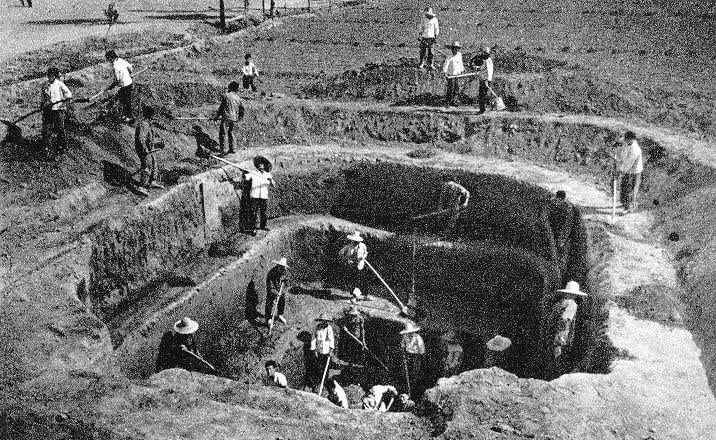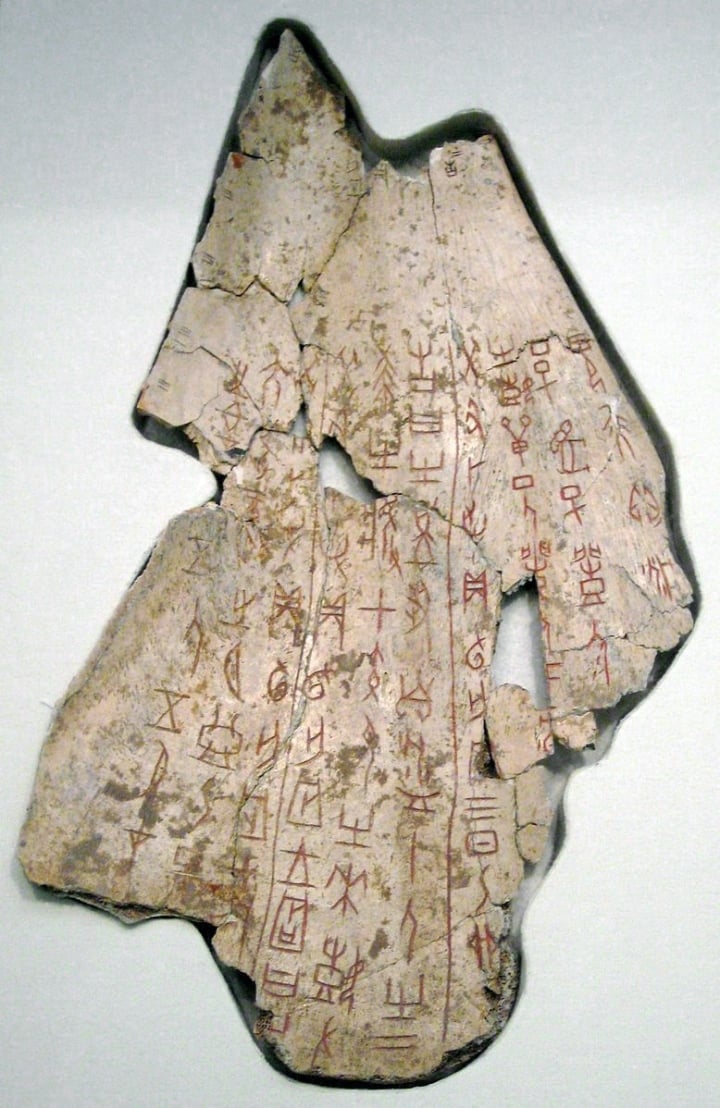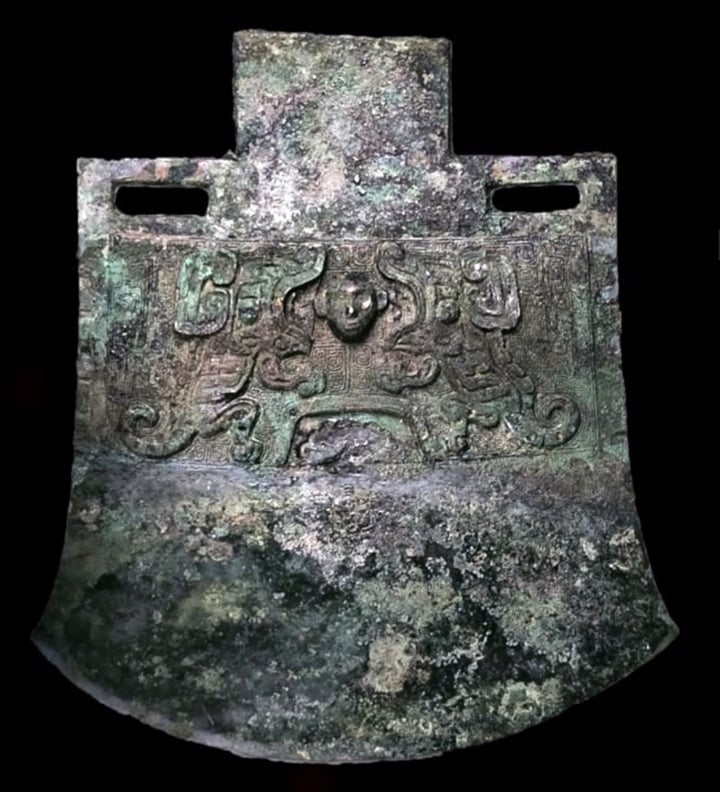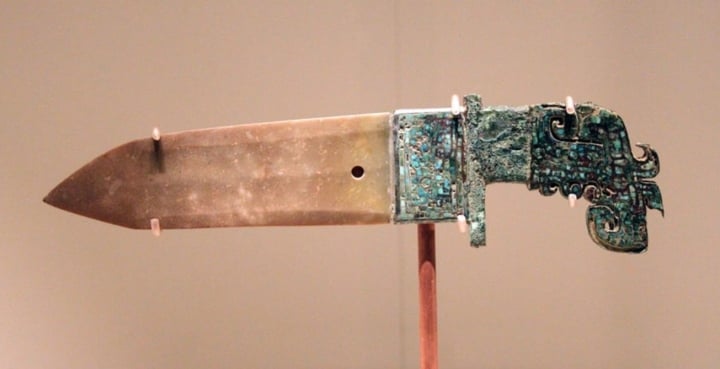In 1976, while surveying land planned for agriculture in An Duong city, Ha Nam province, a group of archaeologists discovered the tomb of Phu Hao, queen of King Vo Dinh of the Shang dynasty.

Excavation of Phu Hao's tomb. ( Photo: Khan Academy )
This is the only undiscovered royal tomb of the Shang Dynasty. Since then, archaeologists have begun to unravel the mystery of a "warrior queen" forgotten for thousands of years.
Phu is a formal way of addressing a woman, similar to the word "Lady" in the West. Phu Hao lived in 1200 BC, and had a very high status compared to women at that time. In addition to being one of the three wives that King Vo Dinh appointed as queen, she was also a general.

Oracle bone inscription describing Fu Hao's exploits. ( Photo: Khan Academy )
Oracle bone inscriptions (inscriptions on turtle plastrons and animal bones) record her command of armies and successful military campaigns against enemy nations. In battle, she wielded an axe, a weapon that symbolized her power.
In addition to her role as a general, she was also a diplomat , a law enforcer, presided over sacrificial ceremonies, and hunted down fugitives. Despite being queen, she still had her own domain and paid tribute to the king.
It seems that King Wu Ding loved Fu Hao very much, because he often accompanied her in battles. When he could not go with her, he constantly asked her if she arrived safely and won, according to the notes on the Oracle Bones.
When Phu Hao was sick, King Vo Dinh often visited. The couple had a son named To Ky. He was the eldest son of King Vo Dinh but did not inherit the throne and died in exile at the age of 25.

Ax decorated with two dragons facing each other, mouths wide open in front of a human head. ( Photo: Khan Academy )
When Fu Hao died, Wu Ding built a large mausoleum in the palace right next to the study. She was not buried in the traditional royal tomb, because Fu Hao died on the battlefield and it was believed that burying a war dead in a royal tomb would bring bad luck. That is why her tomb was not discovered until 1976.
Among the 1,600 items found in the tomb were 755 jade artifacts, 455 bronze objects, of which 130 were weapons, four large axes, remains from 16 sacrificial victims, and many other items.
The weapons attest to her power and status as a military leader and priestess. Four bronze axes show that she was given military authority. One axe is decorated with two dragons facing each other, their mouths wide open in front of a human head. This image represents Fu Hao's status as the wife of King Wu Ding.

Jade-encrusted dagger found in Fu Hao's tomb. ( Photo: Khan Academy )
King Vo Dinh often thought of Phu Hao after her death and prayed for her protection before every battle. He even performed a wedding ceremony for Phu Hao's spirit and his ancestors to ensure she would have company in the afterlife.
The discovery of Fu Hao's tomb verifies the stories engraved on the Oracle Bone Inscriptions about King Wu Ding's most favored wife, and also affirms Fu Hao's role as one of the most important female military commanders, female warriors, and female priests in ancient Chinese history.
HONG PHUC (Source: Khan Academy)
Useful
Emotion
Creative
Unique
Wrath
Source





![[Photo] Prime Minister Pham Minh Chinh attends the World Congress of the International Federation of Freight Forwarders and Transport Associations - FIATA](https://vphoto.vietnam.vn/thumb/1200x675/vietnam/resource/IMAGE/2025/10/08/1759936077106_dsc-0434-jpg.webp)
![[Photo] Prime Minister Pham Minh Chinh inspects and directs the work of overcoming the consequences of floods after the storm in Thai Nguyen](https://vphoto.vietnam.vn/thumb/1200x675/vietnam/resource/IMAGE/2025/10/08/1759930075451_dsc-9441-jpg.webp)
























































































Comment (0)